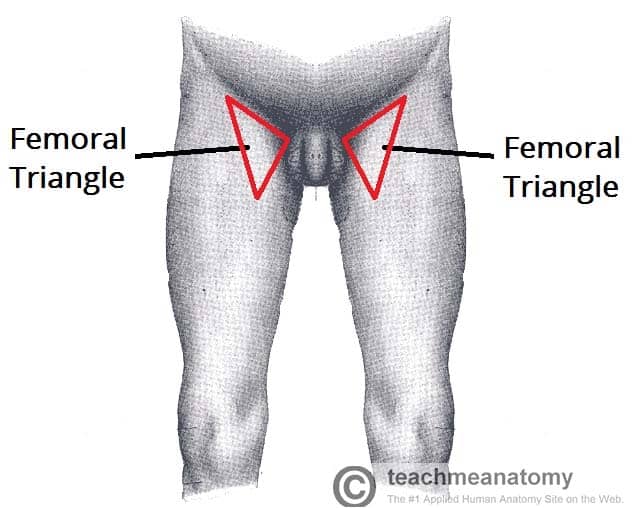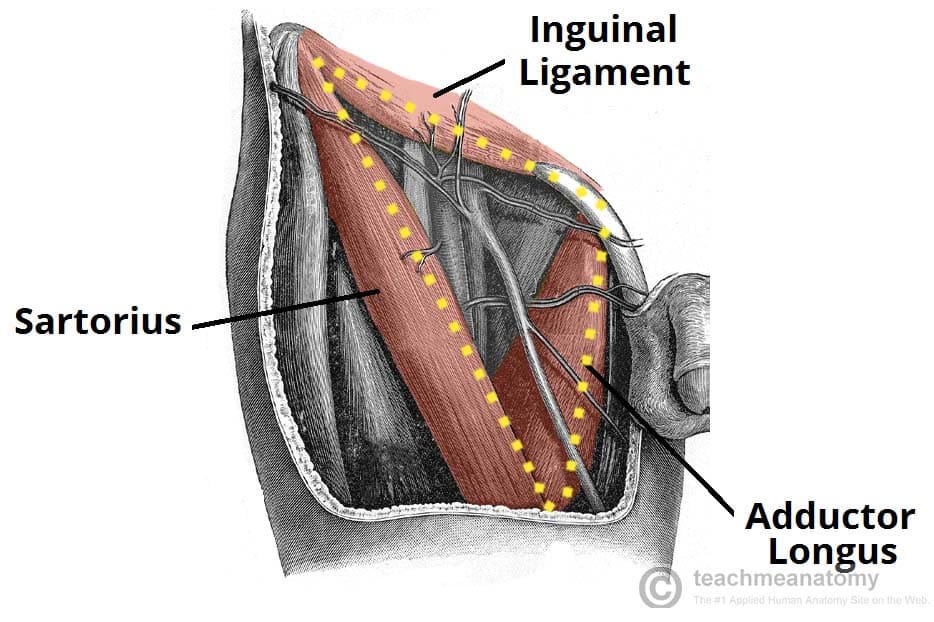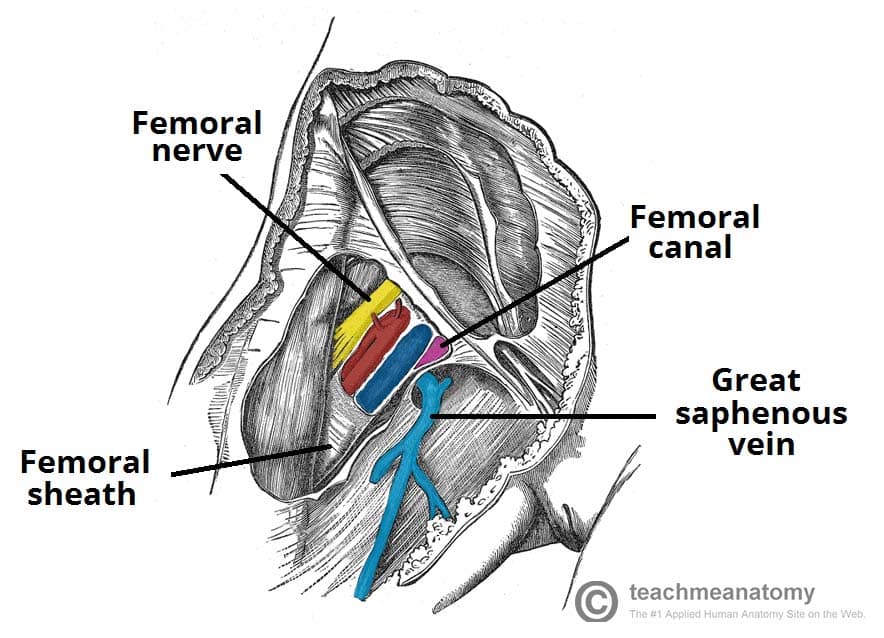The femoral triangle is a wedge-shaped area located within the superomedial aspect of the anterior thigh.
It acts as a conduit for structures entering and leaving the anterior thigh.
In this article, we shall look at the anatomy of the femoral triangle – its borders, contents, and clinical relevance.
Borders
The femoral triangle consists of three borders, a floor and a roof:
- Roof – fascia lata.
- Floor – pectineus, iliopsoas, and adductor longus muscles.
- Superior border – inguinal ligament (a ligament that runs from the anterior superior iliac spine to the pubic tubercle).
- Lateral border – medial border of the sartorius muscle.
- Medial border – medial border of the adductor longus muscle. The rest of this muscle forms part of the floor of the triangle.
The inguinal ligament acts as a flexor retinaculum, supporting the contents of the femoral triangle during flexion at the hip.
Note: Some sources consider the lateral border of the adductor longus to be the medial border of the femoral triangle. However, the majority state that it is the medial border of the adductor longus – and this is definition we have gone with.
Contents
The femoral triangle contains some of the major neurovascular structures of the lower limb. Its contents (lateral to medial) are:
- Femoral nerve – innervates the anterior compartment of the thigh, and provides sensory branches for the leg and foot.
- Femoral artery – responsible for the majority of the arterial supply to the lower limb.
- Femoral vein – the great saphenous vein drains into the femoral vein within the triangle.
- Femoral canal – contains deep lymph nodes and vessels.
The femoral artery, vein and canal are contained within a fascial compartment – known as the femoral sheath.
Acronym for the contents of the femoral triangle (lateral to medial) – NAVEL: Nerve, Artery, Vein, Empty space (allows the veins and lymph vessels to distend to accommodate different levels of flow), Lymph nodes.
Clinical Relevance: The Femoral Triangle
Femoral Pulse
Just inferior to where the femoral artery crosses the inguinal ligament, it can be palpated to measure the femoral pulse. The femoral artery crosses exactly midway between the pubic symphysis and anterior superior iliac spine (known as the mid-inguinal point).
Access to the Femoral Artery
The femoral artery is located superficially within the femoral triangle and is thus easy to access. This makes it suitable for a range of clinical procedures.
One such procedure is coronary angiography. Here, the femoral artery is catheterised with a long, thin tube. This tube is navigated up the external iliac artery, common iliac artery, aorta, and into the coronary vessels. A radio-opaque dye is then injected into the coronary vessels, and any wall thickening or blockages can be visualised via x-ray.
Femoral Hernia
A hernia is defined as “a condition in which part of an organ is displaced and protrudes through the wall of the cavity containing it“.
In the case of femoral hernia, part of the bowel pushes into the femoral canal, underneath the inguinal ligament.
This manifests clinically as a lump or bulge in the area of the femoral triangle. It usually requires surgical intervention to treat.


